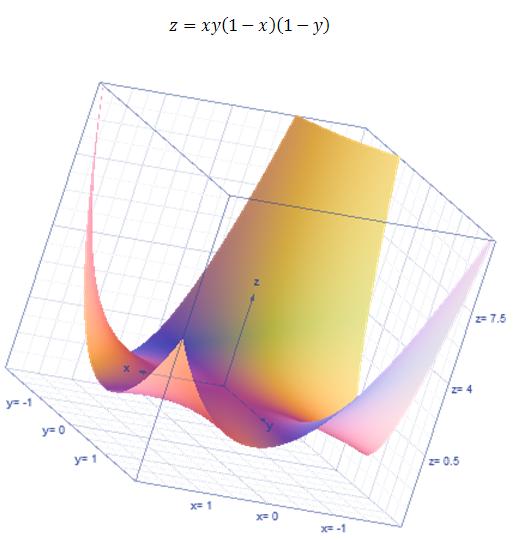There have been a whole flock of article recently addressing the question, “Should we teach algebra to all high school students?” It started (I think, anyway) with Andrew Hacker’s Op-Ed post, “Is Algebra Necessary?” in a recent issue of the New York Times. His conclusion: No, algebra isn’t necessary. A careful reader ought to question, “What does Hacker mean by algebra?” and “Do we want an emeritus political science professor to make decisions about the mathematical education of the masses, given that there are so many people whose entire careers are dedicated to mathematics, the research of mathematics teaching and learning, and being mathematics educators?” But today I wasn’t planning on addressing those questions or Hacker’s article. (See Daniel Willingham’s response, “Yes, algebra is necessary” if you’re interested.)
Instead, there are several important issues that I think are worth pondering whenever anyone starts talking about the necessity of algebra.
1. What do they mean by algebra?
Out of curiosity, I asked WolframAlpha to tell me about “algebra”. It gave a lot of responses (but no definition). It did, however, provide a clear distinction that algebra is something more than equation solving. Yet in Schank’s first paragraph, he seems to conflate all of algebra with the quadratic formula:
“Whenever I meet anyone who wants to talk about education, I immediately ask them to tell me the quadratic equation. Almost no one ever can. (Even the former chairman of the College Board doesn’t know it). Yet, we all seem to believe that everyone must learn algebra.”
I’ll skip over a discussion pointing out that he means the quadratic formula but wrote “the quadratic equation” (as if there’s only one).
In any case, very few people have given the word “algebra” a good-enough definition, from my viewpoint. When I put on my research mathematician hat, I like thinking about universal algebra, which is somehow even more broad and amorphous (and beautiful) than the above definition could convey. (I am even a published, theorem-proving universal algebraist.) I define algebra like this:
Algebra. Noun. The branch of mathematics that deals with the study of structure.
Yes, that includes studying equations. But it also includes wilder animals like finite fields or nonfinitely axiomatizable equational theories and the varieties they generate!
2. Who is the “they” and who is the “us”?
Schank also asks,
“Are mathematicians the best thinkers you know? I know plenty of them who can’t handle their own lives very well.”
It turns out that, despite lots of evidence to the contrary, mathematicians are people. As in, real people with real lives and real feelings and real kids and real cats and real hobbies. And, sometimes, real problems. I don’t know why this is news. Surely no one would suggest that we ought not listen to music (or teach music in schools) because some musicians have had difficult lives. The people behind the subject is what makes it compelling. If only robots did math, I’d probably be less interested in math. [And more interested in robots.]
How do mathematicians think? Wow, that’s a fabulous question. Look, no mathematician I know claims that we think “the best.” That’s a “they versus us” distinction if I ever heard one. However, many of us do claim that we think differently.
To believe anything, a mathematician requires a proof.
This is different from every other academic discipline. Mathematicians have a very strict code for how we think about problems. Intuition is never enough.
3. Who taught these people mathematics?!
Moving toward his conclusion, Schank writes,
“You can live a productive and happy life without knowing anything about macroeconomics or trigonometry but you can’t function very well at all if you can’t make an accurate prediction or describe situations, or diagnose a problem, or evaluate a situation, person or object.”
(It humors me that the end of the article talks about making “sensible political choices,” but here it turns out we don’t need to understand any macroeconomics. Say what?)
I wonder who taught these people algebra! None of my students will survive my courses unless they are able to demonstrate that they can use the mathematical content knowledge from my class and apply it to real-world problems about situations that involve optimization or diagnostics or evaluations or predictions. Who are these [potentially imagined] math teachers who teach nothing but endless factoring of polynomials without any motivation?
4. What’s a better question to ask?
Schank and I agree that “[t]he ability to reason from evidence really matters in life.” He thinks algebra doesn’t help develop the skills to do this — I disagree hugely. Algebra can help develop this skill. Does every math educator teach it perfectly? No. Could all of us math educators do a better job? Yes.
My goal as an educator of mathematics is to converge asymptotically on being amazing at my job. Could teaching algebra help students understand logic, reason, and critical thinking? Absolutely. Does it always? Maybe not. But that is not a reason to say, “Don’t teach algebra.” We should say, “We need to teach algebra better.”
And, I promise, I am trying to do just that — along with thousands of my colleagues around the world.


